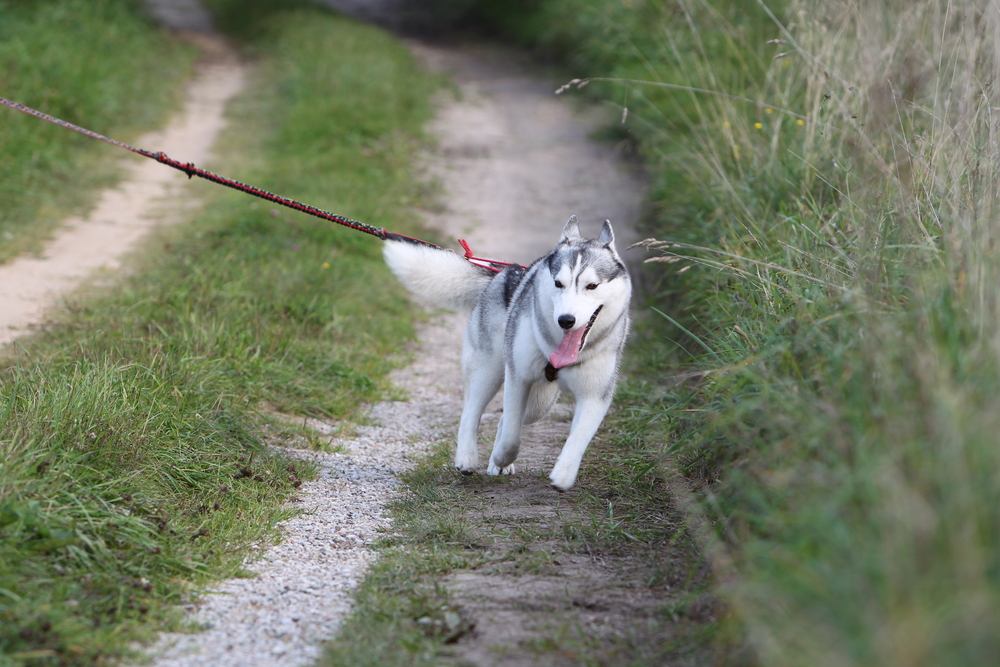Dogs and wolves share many dominant canine behaviors because they are members of the same biological family. You might be wondering what this connection means for both the furry and human members of your family, given that wolves are notorious for being vicious predators in the wild. Making friends by being the dominant dog is undoubtedly a good strategy, but dominant dog behavior may not always align with your dog’s endearing personality.
Fortunately, recent research suggests that dog owners shouldn’t be concerned about dominant behavior. Continue reading to discover the significance of dog pack behavior, how to recognize it, and some tips on how to handle it effectively both during and after training.
Common Signs of Dominant Behavior in Dogs
Dogs exhibit their dominance in a variety of ways, which frequently results in aggressive behaviors that could seriously hurt children or other animals. Aggression toward children and biting at the heels of kids and other pets in an effort to “herd” them are crucial indicators of dominant behavior in dogs. Any dog owner who observes aggressive behavior in their pet should contact our Fredericksburg dog training center to address the issue. Our dog training classes provide instruction that teaches how to effectively deal with aggressive behavior in a secure setting. Some other common signs of Dominant behavior include:
 Another important sign of dominant behavior is the refusal to listen to their owners commands and respond by growling, jumping, barking, nipping, or other inappropriate behavior. Additionally, they commonly have a high level of food and toy aggression, also known as guarding. Causing them to growl, bite, or nip at other animals, children, or their owners when they get to close to the items they’re guarding.
Another important sign of dominant behavior is the refusal to listen to their owners commands and respond by growling, jumping, barking, nipping, or other inappropriate behavior. Additionally, they commonly have a high level of food and toy aggression, also known as guarding. Causing them to growl, bite, or nip at other animals, children, or their owners when they get to close to the items they’re guarding.
Staring down the other dog
Additionally, some dogs will glare at the other dog in an effort to intimidate or caution other dogs to stay away from them. When two dogs maintain prolonged eye contact, it may be a sign that a fight is about to break out. As a result, you should take care to separate them before this happens.

Similar to humans, dogs frequently exhibit this eye contact behavior while standing still or moving very slowly.
Dominant dogs frequently try to mount or otherwise stand directly above submissive dogs while they roll on their backs to show their bellies during interactions.
Most of the time, this won’t result in a confrontation, but you should try to prevent it whenever you can.
If ignored, your dog might develop the habit of mounting other dogs while out for walks or engaging in play with unrelated dogs in the park.
Dog owners must therefore strike a delicate balance in order to properly address the behavior of their furry friend.
First and foremost, it’s critical that we recognize the warning signs of our dogs acting domineering toward other dogs and take appropriate action as needed.
Baring of teeth, snarling, and growling
Dogs will demonstrate their dominance in a wide range of different ways. However, they typically show their teeth, snarl, growl, or bark at other dogs who approach their food, favorite object, or territory too closely.
Additionally, they might even start to defend their owner by not allowing other dogs to approach without lunging or biting them.
FAQ
How do I stop my dog from being dominant over other dogs?
- Stay Calm. …
- Be Assertive. …
- Establish Rules for People to Follow. …
- Do Not Force Them to Interact. …
- Give the Dog a Job. …
- Identify Bad Behaviors and Inconsistent Rules. …
- Identify the Reason for the Listed Bad Behaviors. …
- Set an Achievable Goal of the Training.
What causes a dog to be dominant?
Poor eyesight, hearing, and hormonal imbalances in addition to underlying medical conditions can all affect a dog’s health. Due to the discomfort and irritability these conditions can cause, a dog may exhibit dominant behavior like biting, growling, and barking.
How do aggressive dogs show dominance?
- You Need to Be Even More Calm-Assertive. Dogs will not follow unstable energy.
- Set Rules, Boundaries, and Limitations. …
- Don’t Force Affection. …
- Use Meal Time to Your Advantage. …
- Give Your Dog a Job.